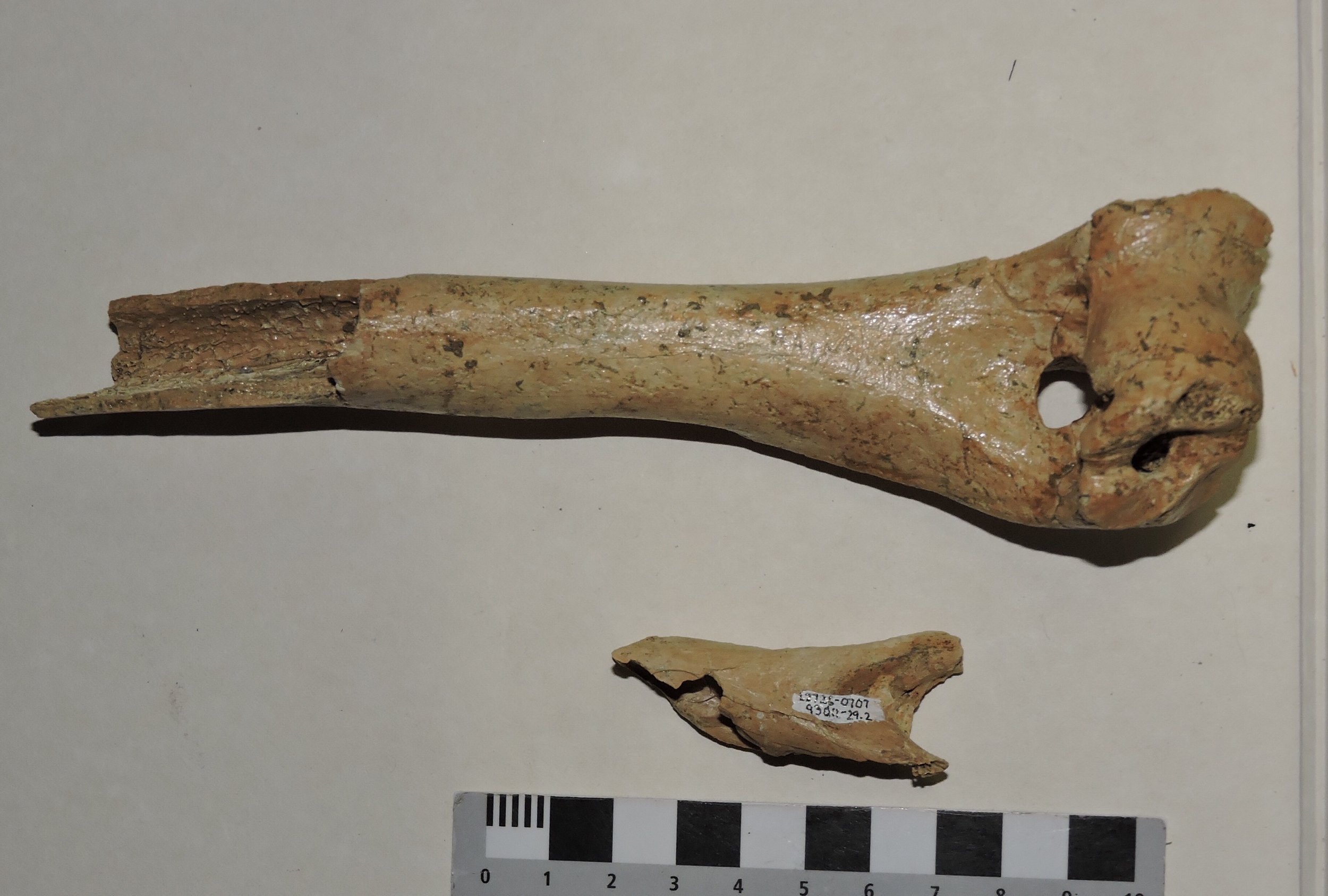 As I've mentioned in several other posts, fossil carnivores are rare in the Diamond Valley Lake fauna, but they're not completely absent. The remains tend to be isolated bone fragments, but they do reveal the presence of the particular taxon. The small fragment shown here is part of a right humerus from a canid (the dog family). Both ends of the bone are missing, but this fragment comes from closer to the distal end (towards the elbow). Three weeks ago I posted about another canid right humerus, probably from a dire wolf. It's useful to see these specimens side-by-side:
As I've mentioned in several other posts, fossil carnivores are rare in the Diamond Valley Lake fauna, but they're not completely absent. The remains tend to be isolated bone fragments, but they do reveal the presence of the particular taxon. The small fragment shown here is part of a right humerus from a canid (the dog family). Both ends of the bone are missing, but this fragment comes from closer to the distal end (towards the elbow). Three weeks ago I posted about another canid right humerus, probably from a dire wolf. It's useful to see these specimens side-by-side:  Even though this week's specimen is fragmentary, it's clearly smaller than the dire wolf. Its size is consistent with Canis latrans, the coyote. Coyotes are among the most common mammals at Rancho la Brea, and are still common in Southern California, so their presence in the Diamond Valley Lake fauna is not surprising. But it's still nice to confirm their presence, especially as modern coyotes seem to fill interesting roles in modern ecosystems. There are strong indications that modern coyotes are major predators of pronghorn, but only in the absence of wolves. Apparently wolves alter the behavior of coyotes (either by attacking them or driving them away), resulting in less overall pronghorn predation. In turn, it seems that coyotes suppress populations of domestic and feral cats, reducing predation on birds. These studies hint at the complexity of the interactions within ecosystems. With the amazing range of animals in the Diamond Valley Lake fauna there must have been some fascinating biotic interactions.
Even though this week's specimen is fragmentary, it's clearly smaller than the dire wolf. Its size is consistent with Canis latrans, the coyote. Coyotes are among the most common mammals at Rancho la Brea, and are still common in Southern California, so their presence in the Diamond Valley Lake fauna is not surprising. But it's still nice to confirm their presence, especially as modern coyotes seem to fill interesting roles in modern ecosystems. There are strong indications that modern coyotes are major predators of pronghorn, but only in the absence of wolves. Apparently wolves alter the behavior of coyotes (either by attacking them or driving them away), resulting in less overall pronghorn predation. In turn, it seems that coyotes suppress populations of domestic and feral cats, reducing predation on birds. These studies hint at the complexity of the interactions within ecosystems. With the amazing range of animals in the Diamond Valley Lake fauna there must have been some fascinating biotic interactions.
